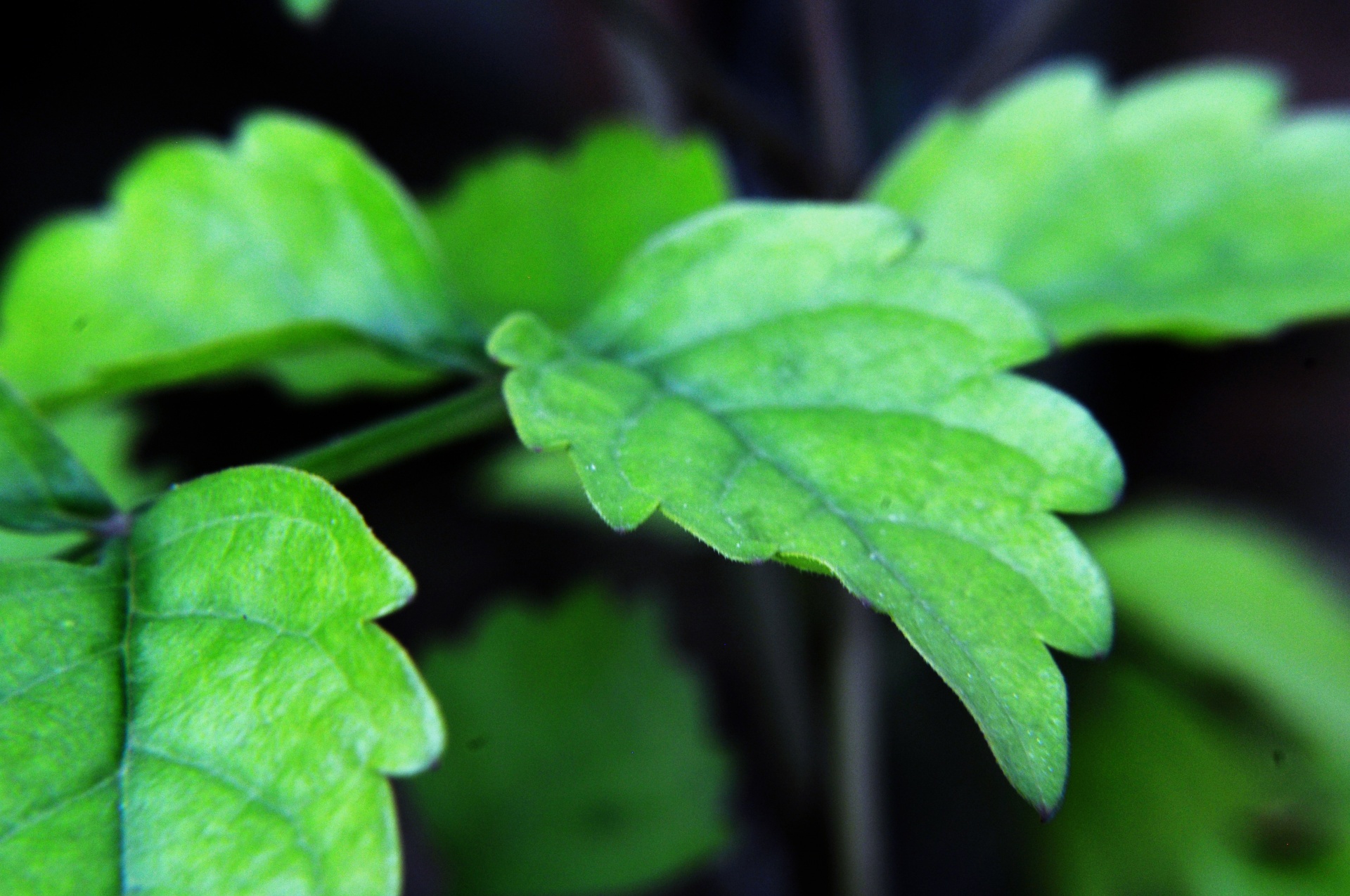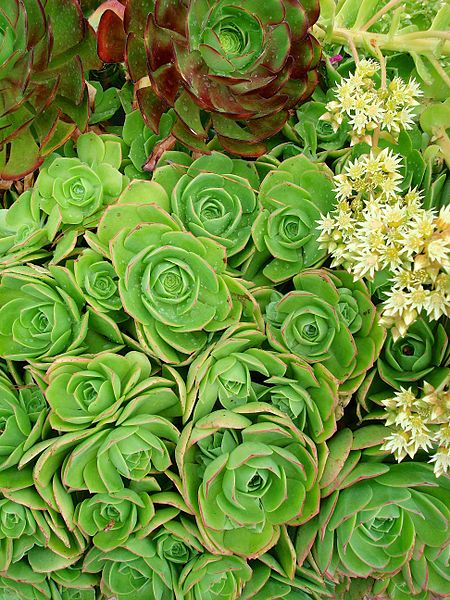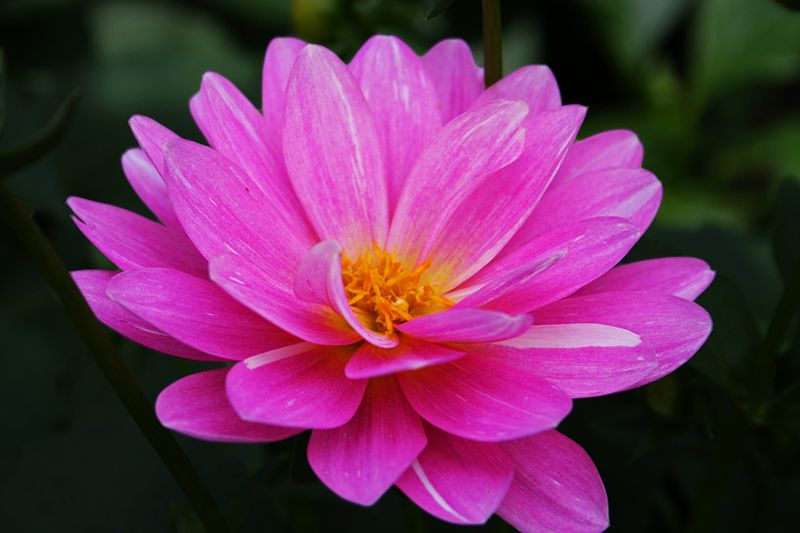ARTICLES
Save the Earth, Plant a Succulent
Succulents. They come in all shapes, sizes, colors, and varieties. Cameron Nursery has them all! Succulents have become more and more popular  throughout the years not only because of their unique appearance, but their environmentally friendly aspect. They do not need much maintenance or a plentiful supply of water either. Although succulents can be put outside in gardens, they are often put indoors as well. All you need is a pot, a partly sunny location, and water it once a week.
throughout the years not only because of their unique appearance, but their environmentally friendly aspect. They do not need much maintenance or a plentiful supply of water either. Although succulents can be put outside in gardens, they are often put indoors as well. All you need is a pot, a partly sunny location, and water it once a week.
More than 60 different plant species are succulent based. They are similar to cacti in the fact that they are both drought tolerant. Not only are they trending, but they come in almost any color imaginable. Although the most common color to get succulents is green, Cameron Nursery has an array to choose from.
A tip for anyone who is trying to get the most out of their succulent plant, is to save all the clippings of the succulent. If you save all the clippings and shreds, you can replant them and grow more succulents! All you have to do is get some soil and a patch of sunlight. After that, give it a pinch or two of water every so often and you will have a brand new plant in no time.
 For all the gardens that don’t have much plants or struggle to grow anything, succulents are a great alternative. They do not require too much care nor do they need a cool climate. Succulents actually prefer hot and dry climates which make them the perfect plant for deserts. Cameron Nursery is located in the heart of the desert so the succulents are grown in perfect conditions making them some of the best plants around!
For all the gardens that don’t have much plants or struggle to grow anything, succulents are a great alternative. They do not require too much care nor do they need a cool climate. Succulents actually prefer hot and dry climates which make them the perfect plant for deserts. Cameron Nursery is located in the heart of the desert so the succulents are grown in perfect conditions making them some of the best plants around!
Bee-Ware
Bees are crucial to the health of trees, flowers, and different plants in the food chain. There are over one trillion individual Bees in our world; but Bees are declining quickly due to the high dosage of pesticides on plants. Since bee’s are our number one pollinator in the world, we need to help prevent them from going extinct.
The Bee is the main pollinator of eighty-seven different types of plants. Many are everyday plants that we use because of the Bees’ ability to pollinate. These include avocados, apples, onions, almonds and coffee beans. All these foods are commonly consumed and taken for granted. Every little Bee has helped grow billion-dollar businesses!
They sustain life as we know it and understand it, in a manner that is unique. As a Bee pollinates it follows a simple pattern. Moving from flower to flower, it transfers pollen and seeds to the next flower. Within these seeds, a new plant is allowed to grow and thrive. One last important part of Bee pollination is that it helps keep the flowers and plants healthy.
Without Bees, our ecosystem wouldn’t be in as good of a condition as it is now. Our food would be less sweet and plants would not be able to reproduce as efficiently. Honey from the Bees provides us with a plethora of health benefits such as antioxidants. Therefore, Bees are one the most important insects in our ecosystems survival.
The Underground
The underground- home of numerous different types of soils. In fact, we use the soil to house seeds, which will then grow to maturity and bear leaves, flowers, and even fruit! But every soil caters to a certain type of plant. When gardening, the first thing to do after picking out your plant, is buying the right type of soil. One of the most popular types of soil is called loamy soil.
Loamy soil is rich in color and spreads easily. Loam soil contains three important characteristics: Sand, Silt, and clay. Plants love this soil because water can easily pass through it allowing the plant to hydrate more quickly. Its sandy texture is key especially in the hot Coachella Valley. There is a wide variety of fruits and vegetables that thrive in Loam soil. Tomatoes, lettuce, pepper, radish, and cucumbers are just a few produce items that will grow in loam soil.
Many may think that citrus fruits need to be planted in an acidic soil. In fact, the ideal PH is about 6.0-8.0 which is slightly acidic to just above neutral. Another important factor when growing Citrus is having good drainage. If the plant does not have food drainage, it will flood the plant and become too overwatered. You can not have too much water but at the same time, you should not have too little either. A good way to manage this, is once the soil dries up, give it more water and repeat this throughout the day.
When growing fruit trees, sunlight is a priority, and Cameron Nursery has a lot of that. The more sun the better. The sunlight gives the fruit is color and candy-like flavor. But with a lot of sun comes a lot of watering. If the plants don’t have enough water, they will not last long.
Sometimes starting off a garden is not always easy due to tiny pests and the surrounding environment. Well if you put down a few eggshells, it will help prevent pests in your garden. Also herbs will keep away the mosquitos! Also vinegar will help destroy weeds.
If you live in a primarily shady area and looking to grow some fruit, you’re in luck! Although a lot of plants prefer sun, there is still a vast majority that will harvest in the shade! Pears, for example, will still continue to grow in partial shade. Other fruits include: blueberries, plum, and kiwi. These are not the only varieties of fruit or plants that will last in the shade, but they are a few of the common ones.
Soil is most important when growing your dream garden. Other than that, make sure to pay attention to what the best environment is for the growing plants as well as how much to water it. Cameron Nursery has avid gardeners who tend to each and every plant and make sure their plants are always at its best!
Sun vs shade
As you’ve probably noticed, not all leaves are the same size. The size of the leaf depends on how many hours of sun they get. If a plant is full sun, that means it gets at least six hours of sun per day. If a plant is partial shade, that means it can get a minimum of three hours of sunlight per day. Not only will the sun affect the leaf size, it will also affect the shade of green and how thick or thin a leaf is.
If the surrounding environment is primarily shaded, the plants living in the area will produce larger and thinner leaves. By expanding the surface area, it helps absorb more sunlight in order to get the nutrients it needs. Once the plants get enough nutrients from the sun, they can begin photosynthesis. Shade leaves also have more chlorophyll because of the chloroplasts.
Not only do plants that get more shade have bigger leaves, they are richer in color. Chlorophyll is the element that gives plants enough energy for photosynthesis as well as giving the leaves a bright green color. It is also the reason why leaves have more of a brighter green on top than underneath. Since the upper half has more chlorophyll, it tends to be more green.
Plants that typically absorb sunlight all day long, have smaller but thicker leaves. Since the sun is already shining down on the plants, it is not so much of a struggle for them to get nutrients. Because of all the sunlight, they actually become a lighter green.
Full sun plants get their thick leaves by the high amount of palisade cells they have. Palisade cells are for light absorption which is why leaves in the shade do not have as much. Since the light gives plants energy, palisade cells are a necessity in all leaves, especially full sun leaves. They are tightly packed together in the palisade layer. This is also where photosynthesis takes place.
There are six steps to complete photosynthesis. Once the roots of the plants absorb enough water, then they take in the CO2 from the air. Then the leaves get energy from the sunlight. From that energy, they will make sugar as well as oxygen. The plant will then release the oxygen into the air. Lastly, the sugar is used for plant growth. Photosynthesis is basically a way for plants to make food.
Flowers that thrive in the sunlight include: sage, violas, and coneflowers. Some plants that grow fruit are also full sun plants. These include: cherries, gooseberries, and blackberries. Of course these are not all of the plants that are made for the sun, but they are just a few to start off your garden.
Shade plants include: pulmonaria, Tiarella cordifolia, and primula. Although these are just a few of many shade based plants, there are many out there! Even some that grow fruits. Whatever type of environment you would like to start your own garden, there are varieties of plants for everyone! Cameron nursery focuses on planting certain types fruits, shrubs, or flowers in ideal locations. Whether a plant calls for sun or shade, there is a place for all!
Drought tolerant plants
For all the environmentalist out there, have you ever thought about purchasing a drought tolerant plant? There are many benefits to having drought tolerant plants. Having a drought tolerant plant will lower your water bills and reduce the amount of water in droughts. These plants also attract other plants with less maintenance, have deeper roots to help stabilize slopes, and are more pest resistance.
Listed are the top 10 drought tolerant plants given by, “Birds and Blooms”:
- Portulaca – bloom in a rainbow of hues, grows in low clusters, thrives in the heat
- Coneflower – very little upkeep, good in almost any soil
- Catmint – attracts butterflies and bees, bloom early summer to early fall, usually around 1 to 3 feet tall and wide
- Agastache – attracts bees, sports purple or white spikes, usually grows 3 to 5 feet tall
- Lantana – grows around 3 to 6 feet tall with gorgeous brightly colored blossoms, best in a sunny garden
- Salvia – vibrant red color that grows 8 to 30 inches tall, grows during any season
- Lavender – delightful fragrance, native to the Mediterranean and Middle East
- Russian Sage – purplish blue colored stems growing 2 to 5 feet tall, last in the cold and poor soil
- California Poppy – must have full sun but can be in poor soil
- Licorice Plant – fuzzy vine, thrives in partial shade to full sun, spreads out to 6 feet
Some people prefer to have their whole backyard as drought tolerant which benefits the environment tremendously. Having drought tolerant plants gives the landscape a modern feel with the variety of bright colored flowerbeds mixed with a grass cluster and gravel space. Faux grass is becoming popular in today’s world with almost 30 states reporting a water shortage. Faux grass will not only help the water bill but you will never have to mow, fertilize, or reseed again. Grass is one of the highest maintenance items a person can have in their garden.
Hopefully this list can help you find all the right plants you need!
Do’s & Don’ts
Dealing with plants does not require a wealth of knowledge, but there are major “do’s and don’ts” that people looking to get into planting should keep in mind. Though some may be under the false impression that planting is as easy as tossing some seeds into soil and adding water; they are sadly mistaken. There is no one way of going about it, but there are common rules to live by that go into planting strong healthy plants. Here are just a few things to keep in mind!
DO pick a good location– It all starts with picking a good environment that will allow the plants to grow and not inhibit the plants to get the necessities required for a long healthy life. Along with this, one should choose plants that will be able to acclimate themselves in that environment.
DON’T use synthetic fertilizers- Synthetic fertilizers are more toxic than one may think. Yes, they do cause plants to grow quickly, but in the long run it causes a lot of stress and potentially could even cause overgrowth.
DO consider going organic- Organic planting is the way to go for a few reasons: the soil deters pests naturally, prevents mosquitoes, helps build strong roots, and it’s cheaper at the end of the day!
DON’T overwater- As with anything, too much of something could potentially be dangerous/unhealthy. Likewise, with watering plants, depending on the climate it is common to do short rounds of watering every other day. If one can see their footsteps on the lawn after being watered that is an indication of overwatering!
DO plant trees- Trees are helping hands in the garden. Not only do they create shade, but they cool down the ground temperature as well as absorb pollutants and give off oxygen.
DON’T mass plant- Diversify! It is better to mix the types of plants you have, because if one plant gets ill they all do. Indigenous plants are recommended to mix in the garden, however a large amount of indigenous plants could be risky because of the pests they bring along do not necessarily have a natural fix in its new environment.
DO enjoy yourself & the process along the way!
These are just a few things to keep in mind while taking the first steps into the world of planting. People find what works for them and their plants along the way. Happy planting!








